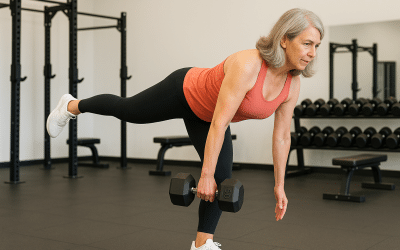Are you frustrated because you’re not getting the results you want although you’ve tried everything? Read closely and discover how Inner Thigh Lies are holding you back, especially when it comes to effective inner thigh exercises.
The Truth about Spot Reduction
Understanding inner thigh exercises is essential for anyone looking to tone their legs and improve overall fitness.
The first myth that you have to eliminate before you can get results is that working your inner thighs directly through inner thigh exercises will magically metabolize the fat that may be covering the muscles below.
This myth of spot reduction makes no sense; I’ll show you why.
Assuming that you are right-handed, over the course of your entire life (about 29 years, I’m guessing) you have used your right arm several thousand times more than you have used your left, correct?
So if spot reduction existed, your right arm would be ripped and your left arm would be flabby! Is that the case?
No, because fat is genetically distributed.
You have no more control over where you lose fat than you do over where you gain it.
Need more proof?
When people go on diets, they eat less, right? That means that they are using their chewing muscles less, right?
So why don’t their faces get fatter instead of leaner?
Spot reduction does not and cannot happen. Inner thigh exercises will not and cannot specifically target the fat deposits on your inner thighs.
Forget about “Toning”
Second is the myth that many reps will “tone” the inner thigh muscles. There is no such physiological process as “toning.”
There are only two factors of body composition that you can control: fat and muscle. They are two separate things like the proverbial apples and oranges.
In general, you probably want to lose fat and gain a little muscle; that’s the best way to improve your body composition.
High Reps Won’t Get You There
For most people, high reps will not and cannot build any muscle whatsoever and, as pointed out above, will not selectively burn fat from the inner thigh (or any other body part, for that matter).
For each muscle and for each exercise there is a threshold of weight (or “load,” physiologically) below which you get minimal, if any, benefit in strength or muscular growth.
High reps, especially when done with a weight that doesn’t challenge the muscle at all, are a less effective use of your workout time because they neither burn fat optimally nor strengthen and build the muscle.
“Toning,” “firming,” “tightening,” and “sculpting” are all meaningless terms that do not describe any physiological process that exists in the human body.
As mentioned earlier, what you want to do to improve your appearance is build at least some muscle; that’s the optimal way to burn fat.
It’s the loss of muscle as we get older that has been linked to the gradual decrease in metabolic rate and concomitant increase in weight that many of us see.
In order to get back the body you had when you were younger (or at least a reasonable facsimile thereof), you have to get back the muscle.
Inner Thigh Exercise Machines Don’t Work
Another factor to consider is functional anatomy. What do the inner thigh muscles actually do?
They certainly don’t do the motion that you use on the seated hip adduction machine. Do you know that there isn’t even an official term for movement of the hip in that plane – because it’s unnatural.
The only time that you move your leg like that is when you bring your left leg in when you enter on the driver’s side of the car, and when you pull your right leg out as you exit. That’s about it!
Besides, there are five separate muscles in your inner thigh – each designed to work best when your leg is at different angles.
In the seated hip adductor machine, your leg is positioned in a way that stresses only one of the five adductors – the adductor magnus. The other four muscles are virtually neglected.
The normal, everyday function of the adductors for most people is to pull your thigh back to the neutral position. That is, when your leg moves forward (as in walking), some of these muscles help pull your leg back, and vice versa.
Also, just as important, you use your inner thigh muscles to prevent over-abduction; in other words, you use your adductors to stay balanced whenever you’re on one leg (again, as in walking).
Therefore, the most effective exercises for your inner thighs are those in which you move one leg forward (hip flexion) or backward (hip extension) while standing on one leg (using the adductors as stabilizers).
Direct adductor exercise, however, often has the effect of making the inner thigh muscles adductors discernibly larger – the exact opposite of what most women are trying to accomplish.
Don’t get the impression that seated hip adduction is a complete waste of time; it isn’t. The adductor magnus is a large muscle, therefore the exercise can burn a lot (relatively) of calories.
It just won’t get you the results that you are probably looking for. Be aware of what you are doing and why with this and every exercise that you do.




